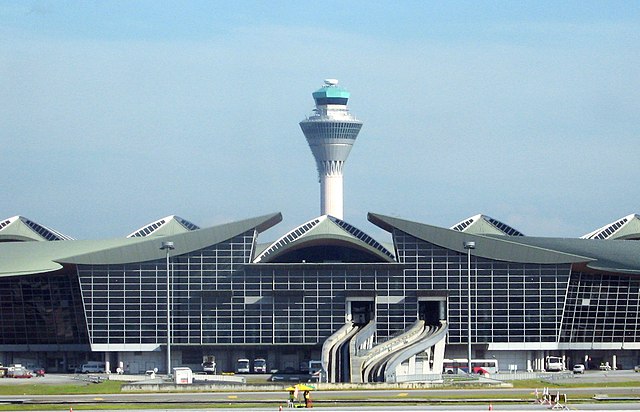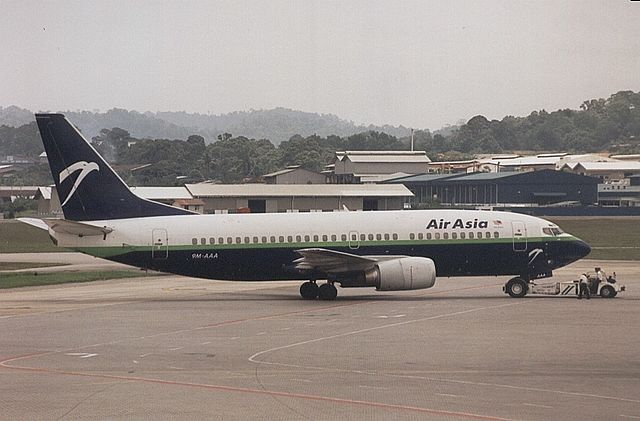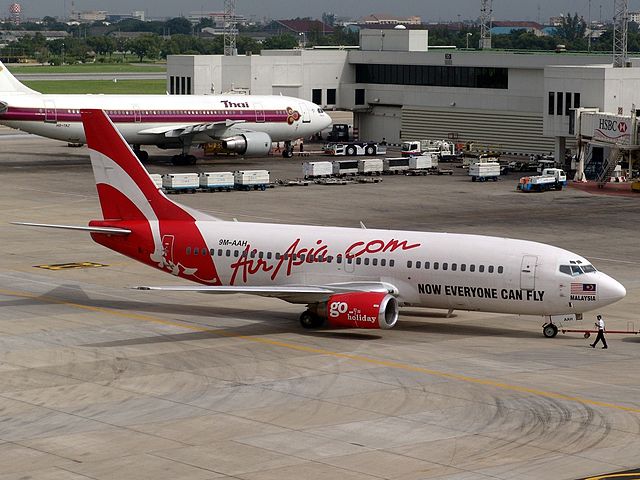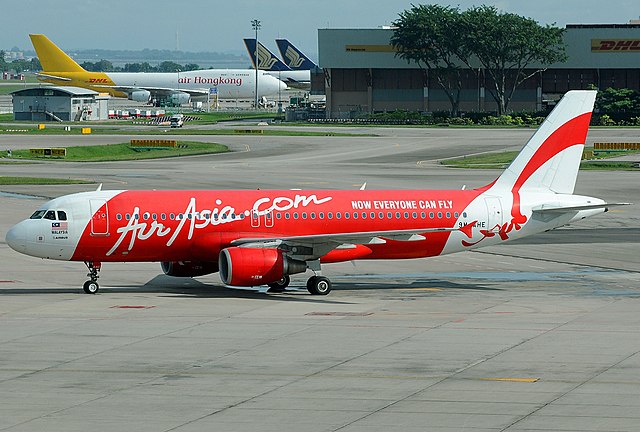Transportation in Malaysia started to develop during British colonial rule, and the country's transport network is now diverse and developed. Malaysia's road network is extensive, covering 290,099.38 kilometres, including 2,016.05 km of expressways. The main highway of the country extends over 800 km, reaching the Thai border from Singapore. Peninsular Malaysia has an extensive road network, whilst the road system in East Malaysia is not as well-developed. The main modes of transport in Peninsular Malaysia include buses, trains, cars and to an extent, commercial travel on airplanes.
The 966 km North–South Expressway, which runs through seven states in Peninsular Malaysia, is the longest expressway in Malaysia.
KLIA is the main international airport in Malaysia.
Shuttle boats ferry to the Malacca-Sumatra ferry (the big yellow boat) anchored offshore near Malacca.
Capital A Berhad, operating as AirAsia, is a Malaysian multinational low-cost airline headquartered near Kuala Lumpur, Malaysia. It is the largest airline in Malaysia by fleet size and destinations. AirAsia operates scheduled domestic and international flights to more than 166 destinations spanning 25 countries. Its main base is KLIA Terminal 2, the low-cost carrier terminal at Kuala Lumpur International Airport (KLIA) in Sepang, Selangor, Malaysia. Its affiliate airlines AirAsia Cambodia, Thai AirAsia, Indonesia AirAsia, and Philippines AirAsia have bases in Phnom Penh, Bangkok–Don Mueang, Jakarta–Soekarno-Hatta, and Manila–Ninoy Aquino airports respectively, while its sister airline, AirAsia X, focuses on long-haul routes. AirAsia's registered office and head office is at Kuala Lumpur International Airport.
A Boeing 737-300 with the original livery as a government-owned full-service carrier (1996–2002 livery)
A Boeing 737-300 after the Tune Group takeover as a low-cost carrier (2002–2005 livery)
Airbus A320, the workhorse fleet on the airline since 2005 (2005–2008 livery)
An A320 with the second iteration of the 2005 scheme (2008–2012 livery)







